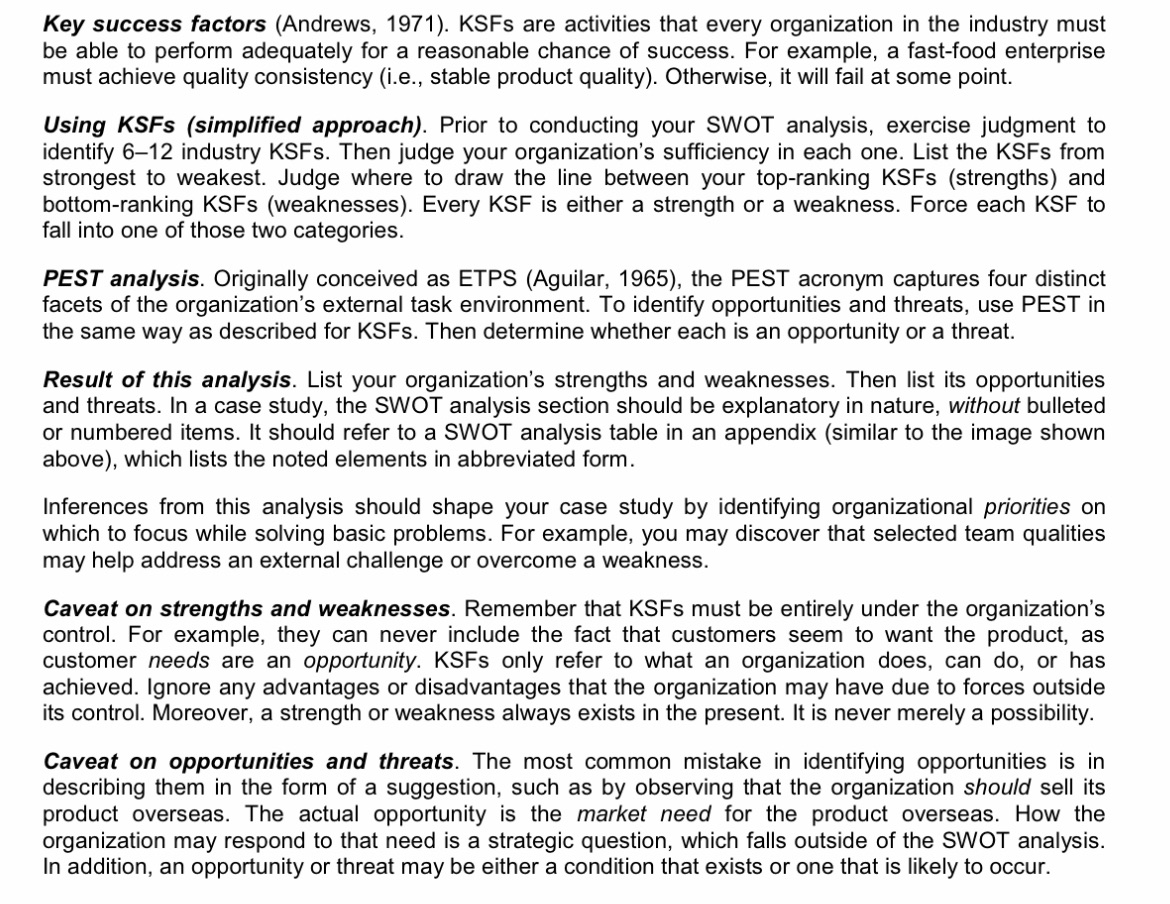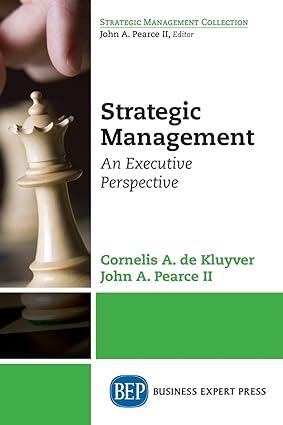Key success factors (Andrews, 1971). KSFs are activities that every organization in the industry must be able to perform adequately for a reasonable chance of success. For example, a fast-food enterprise must achieve quality consistency (i.e., stable product quality). Othenlvise, it will fail at some point. Using KSFs (simplied approach). Prior to conducting your SWOT analysis, exercise judgment to identify 612 industry KSFs. Then judge your organization's sufficiency in each one. List the KSFs from strongest lo weakest. Judge where to draw the line between your top-ranking KSFs (strengths) and bottom-ranking KSFs (weaknesses). Every KSF is either a strength or a weakness. Force each KSF to fall into one of those two categories. PEST analysis. Originally conceived as ETPS (Aguilar, 1965), the PEST acronym captures four distinct facets of the organization's external task environment. To identify opportunities and threats, use PEST in the same way as described for KSFs. Then determine whether each is an opportunity or a threat. Result of this analysis. List your organization's strengths and weaknesses. Then list its opportunities and threats. In a case study, the SWOT analysis section should be explanatory in nature, without bulleted or numbered items. It should refer to a SWOT analysis table in an appendix (similar to the image shown above), which lists the noted elements in abbreviated form. lnferences from this analysis should shape your case study by identifying organizational priorities on which to focus while solving basic problems. For example, you may discover that selected team quaiities may heip address an external challenge or overcome a weakness. Caveat on strengths and weaknesses. Remember that KSFs must be entirely under the organization's control. For example, they can never include the fact that customers seem to want the product, as customer needs are an opportunity. KSFs only refer to what an organization does, can do, or has achieved. Ignore any advantages or disadvantages that the organization may have due to forces outside its control. Moreover, a strength or weakness always exists in the present. It is never merely a possibility. Caveat on opportunities and threats. The most common mistake in identifying opportunities is in describing them in the form of a suggestion, such as by observing that the organization should sell its product overseas. The actual opportunity is the market need for the product overseas. How the organization may respond to that need is a strategic question, which falls outside of the SWOT analysis. In addition, an opportunity or threat may be either a condition that exists or one that is likely to occur







